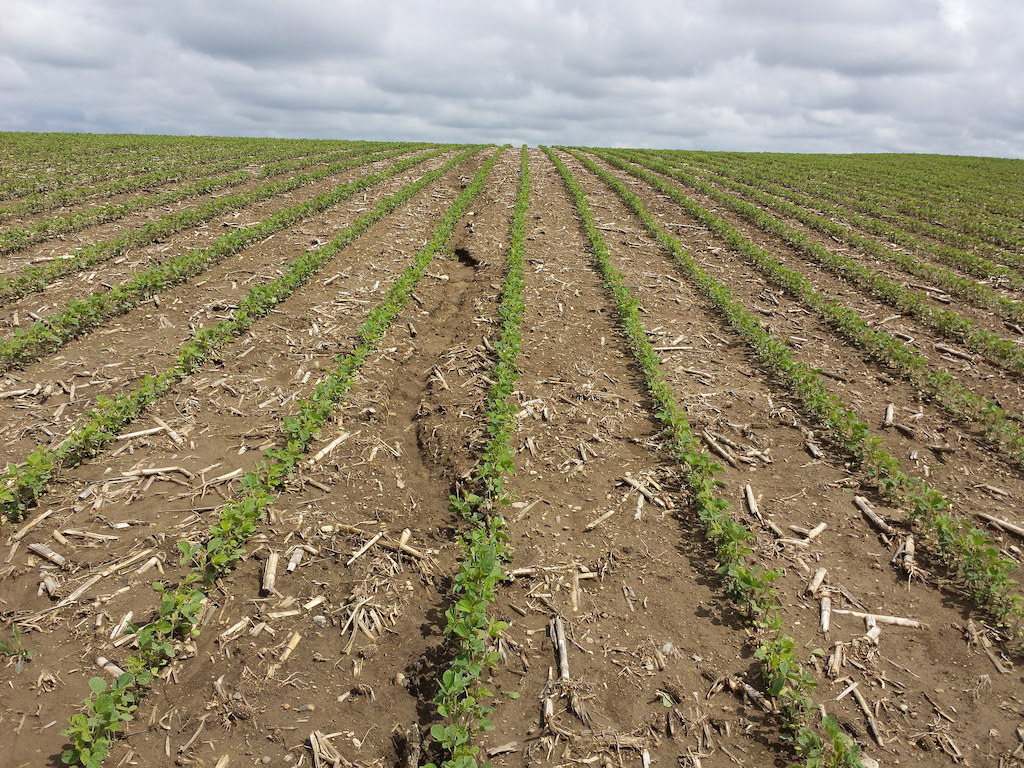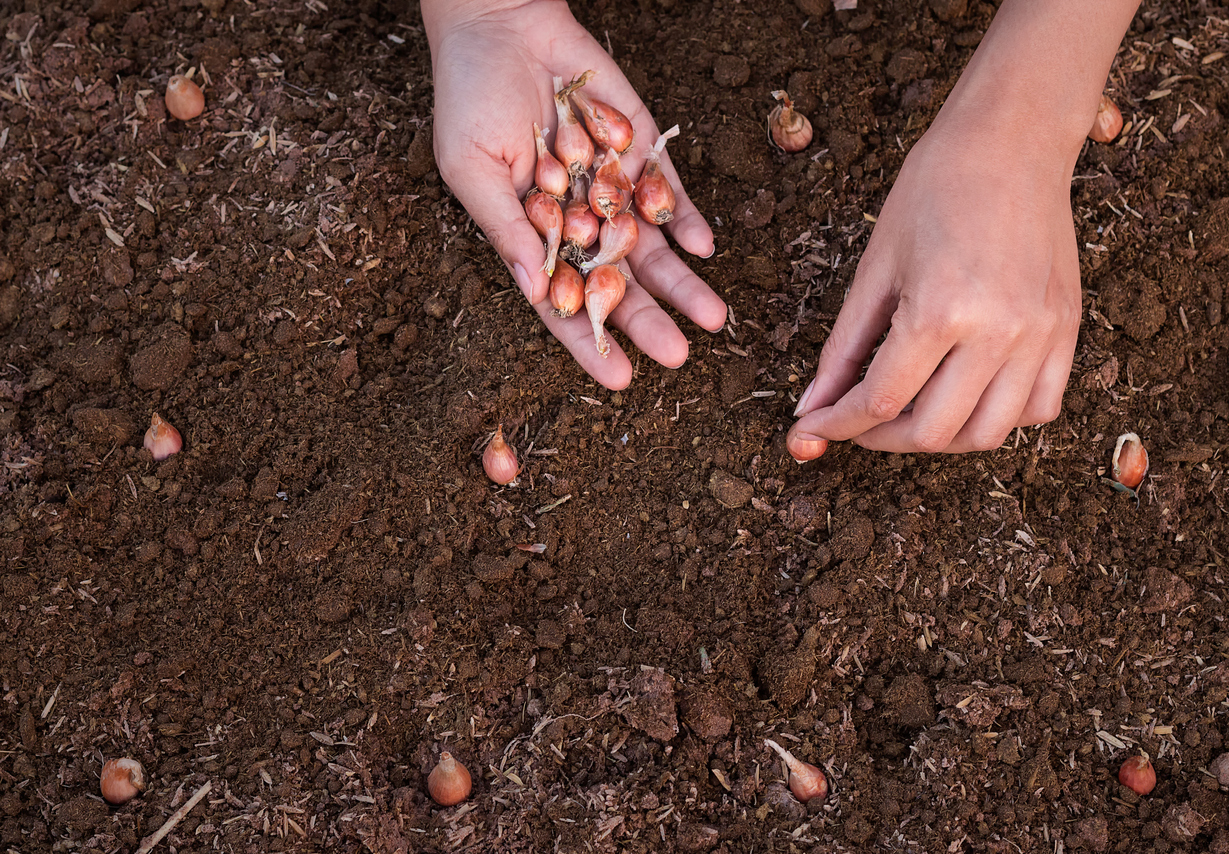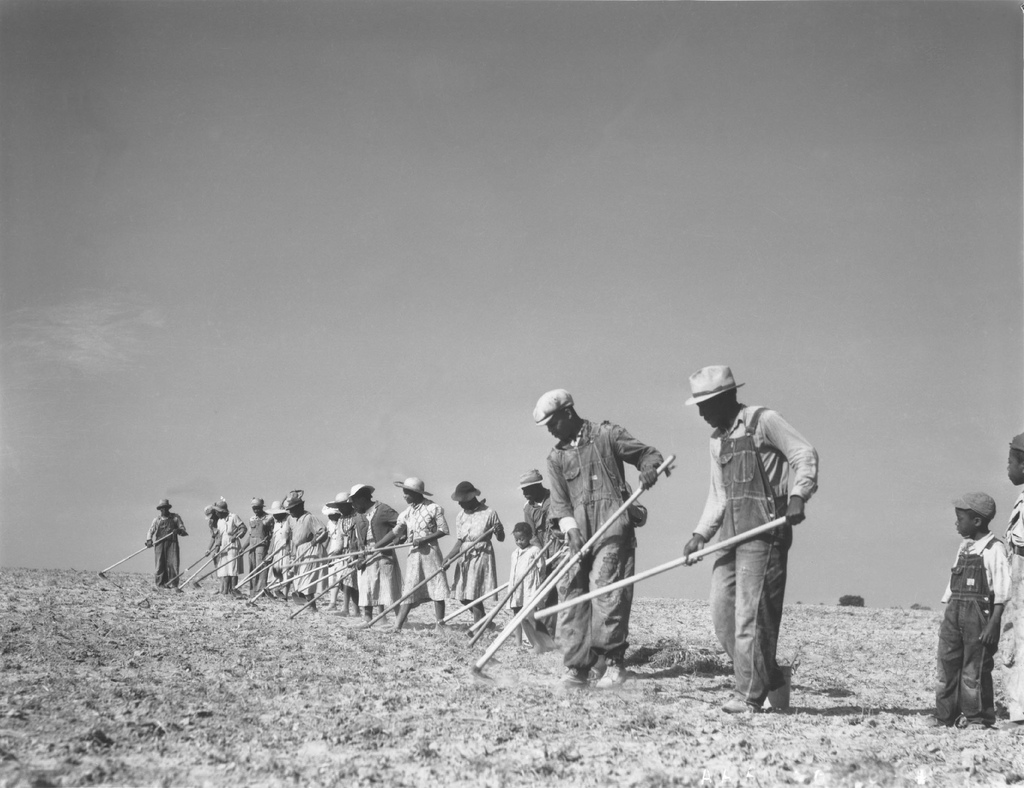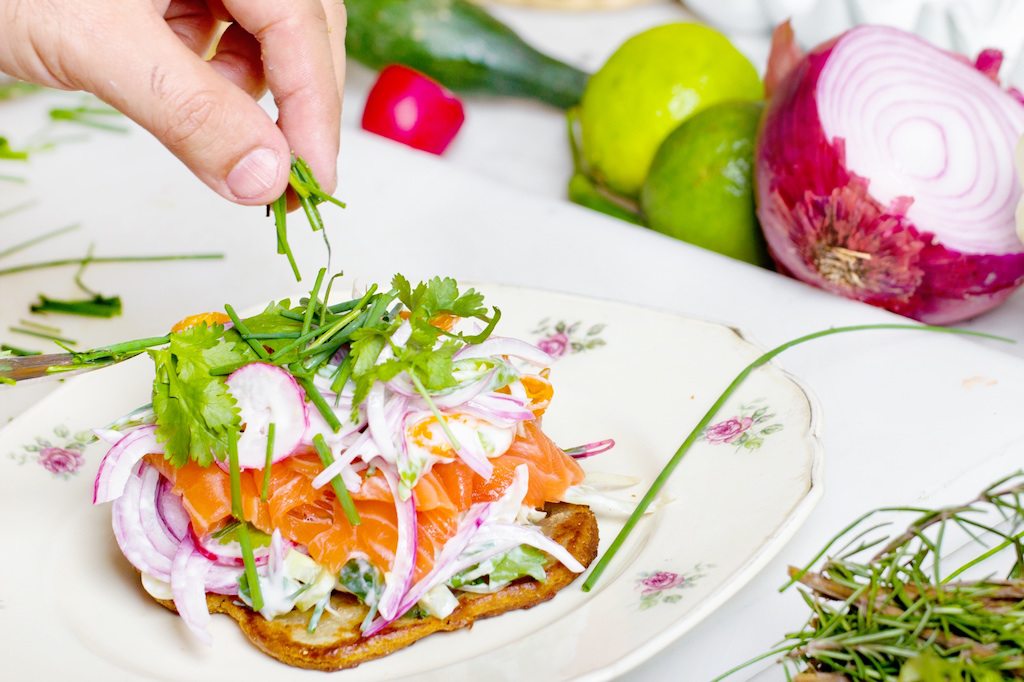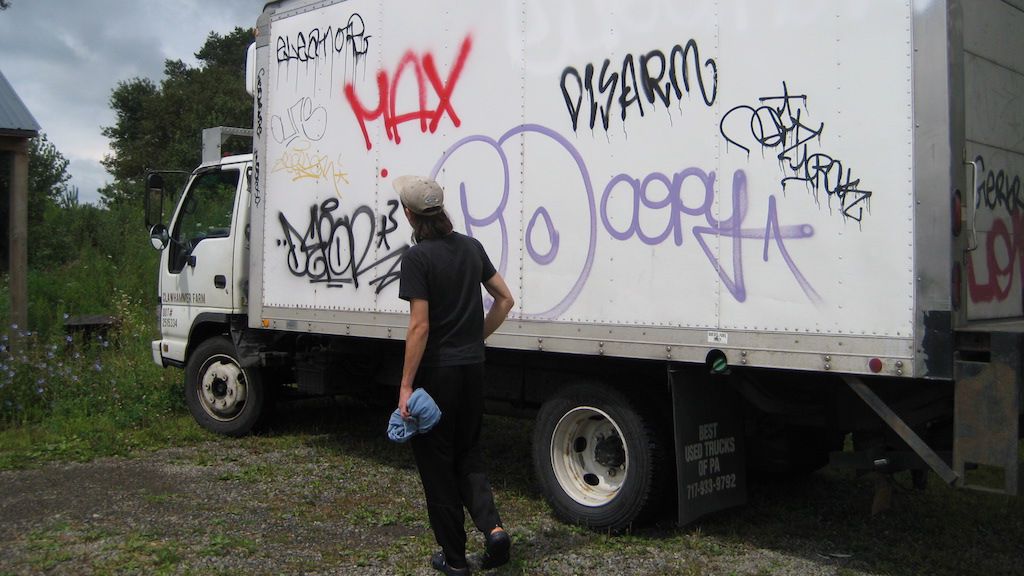
Thomas Fox Parry
In 2009, Nick Westervelt and his then-partner Becky Mumaw started raising livestock on 30 tilted acres of upstate New York’s Broome County. After five years’ hard work, their operation, Clawhammer Farm, had all the trappings of success: over 300 pastured pigs and sheep, a thriving CSA, popular on-farm programs (their slaughter-your-own event was covered in the New York Daily News), and high-paying restaurant clients in Brooklyn and Manhattan.
There was just one problem. They weren’t making any money. Though satisfied chefs placed repeat orders, profit remained low even as revenue steadily increased. Weather, mechanical failures, busted fences, feed prices, illness and pests intervened, all adding to the sizable cost of bringing a pig to market weight over the course of ten months. Though Clawhammer claimed over $500,000 in sales in its final year, it cleared just $4,000 profit.

In the old days, Clawhammer Farm had a herd of pigs, a few goats and sheep, and a lone milking cow pictured here with owner Nick Westervelt. Today, there’s just a truck
Then came the final straw: personal affairs interceded, and Mumaw and Westervelt broke up. Westervelt was alone on the farm, questioning the whole venture, when he realized that the solution had been right in front of him all along.
“I was spending fifty hours covered in shit when I had something else going in the ether,” he says.
The answer was in an informal partnership he had with Tim and Sarah Haws, the owners of Autumn’s Harvest Farm, 60 miles northwest in Romulus, NY. Westervelt had bought his first breeder pigs from them, and would sometimes sell their beef, too: he’d buy it at a higher price per pound than the Hawses could get at their market stand in Ithaca, NY, then sell it for a nice markup in New York.
“He said, you know, there’s a big opening in the city for local products and humanely-raised animals,” Haws says of Westervelt. “I told him the price I get locally. He automatically bumped up the quote I had given him and said, “I think I can do better than that for you.” Who really does that when they’re opening up a business—says, I can pay you more than what you’re asking?”
Those trips down to New York City he was taking? There was a lot of room left in the truck. And restaurant clients wanted more local meat than he could produce. What if distribution—not farming—was Clawhammer’s future?
After five years of raising animals, Westervelt sold his herd to Haws and went into the trucking business.
From farm to truck
The economics of small-scale animal farming are daunting, and producers tend to scrape by—despite the large and growing demand for pastured meat.
“[Farmers] do it to be part of a movement and have a lifestyle they can be proud of,” Westervelt says. “But no one is making any money.
Bare-bones distribution, however, looked like a different financial proposition.
“All I need is a cell phone, a truck, and a couple of emails,” Westervelt says.
It meant abandoning the most costly parts of the business—housing, feeding and caring for animals—and doubling down on the restaurant sales that were actually turning a profit.
“We make a lot of money [compared to farming],” Westervelt says, “and we don’t do that much work.”
“It takes out a lot of the guesswork,” Haws says. Westervelt “pays well, he pays consistently, and he’s easy to talk to because he was a farmer.”
Because Westervelt buys meat in halves (the full carcass, bisected longways), quarters (four pieces), or primals (six pieces), Haws saves on processing costs.
“It’s a big cost savings for us as the farmer, because you don’t have to pay the USDA to break the meat down into individual cuts,” Haws says. “It could go as high as 68 cents a pound for them to break down and process them. With Nick, we’re saving $100 on a side of pork that’s getting processed.”
Working with Clawhammer also means the Hawses spend less time at the farmer’s market stand—and Westervelt’s a better salesman, anyway.
“Nick has been a great marketer, where I seem to lack a little bit,” Haws says. “It’s been huge for us, because it allows us to spend more time on the farm and less time marketing products.”
The arrangement has helped spur growth at Autumn’s Harvest.
“We get a really good price for our stuff,” Haws says. “That’s allowed me to expand. When we started we were pretty small, but we’ve put up two new buildings and expanded our acreage.”
The economics of one-truck distribution
Though Westervelt started doing the drives himself, today he spends most of his time on marketing, facilitating orders, and keeping the clients happy. Most weeks, he pays Andrew Braddock—his one-time farmhand, now Brooklyn-based delivery driver—to pick up shipments and truck them down to restaurants in New York City.
Each trip nets about $10,000 in sales, which covers the cost of the meat, leaving Clawhammer with about $2500 to $3000 dollars in earnings. The remaining balance has to pay additional expenses and Braddock’s wages. Westervelt splits whatever’s left, 50-50, with his former partner, Mumaw.
It isn’t much, but compared to the vagaries of farm life, distribution costs are more contained and predictable. Westervelt knows what he’ll pay Braddock per trip. The refrigerated truck burns about $400 worth of diesel fuel in a week’s work. Then there’s the financing—$17,000 spread over a five-year installment plan.
Maintanance costs are less predictable. Westervelt and Braddock fix everything they can themselves, as sending the truck to a mechanic for a small problem will eat into a week’s profit. “Also,” Braddock points out, “it has to be fixed between Thursday and Monday. The truck can’t be out of commission for long.”
Then, there’s the tickets.
“When you drive a truck 40,000 miles a year, getting pulled over is unavoidable,” Westervelt says. As a matter of course, police will randomly pull over and inspect commercial vehicles before and after New York City’s bridges and tunnels. Often, they’ll find something ticket-worthy—say, a broken license plate light. Fines on commercial vehicles can reach up to $500 in a hurry, and some tickets require a lawyer to be contested. All of this adds up.
But unlike the years-long slog of scaling up a hog farm, there’s great growth potential: Clawhammer (the distribution service) could truck much more meat to restaurants without a great leap in overhead. At present, when the truck leaves upstate for the city, it’s usually only about one-third full.
“The New York market is essentially endless,” Braddock says. “If we wanted to scale up, we could. The real bottleneck is what we can reliably produce.”
Challenges of the road
To get a view into the trials of trucking, I tagged along on a pickup a few weeks back. The trip begins in Bed-Stuy, Brooklyn, where Braddock strides into a pre-dawn rainstorm.
The Clawhammer Map: three days of meat distribution. Tuesday’s journey to the farm is marked in blue. Wednesday’s route is yellow. Thursday’s is pink. Click the pins for more info.
Overnight, a fresh graffiti tag—Eleanor, it says—has appeared on the side door of the truck’s refrigerated box.
Soon, Braddock’s navigating Canal Street’s weave of cabs, trucks, and potholes—and we beat the rush, emerge into New Jersey in a few minutes, and head north on the Pulaski Skyway.
Braddock makes some calls. He dials Autumn’s Harvest Farm and negotiates the pickup. Then he phones Westervelt about payments. He improvises a hands-free device by donning a pair of contractor earmuffs and wedging his flip phone underneath.
Romulus, NY, neighbor to Ovid and Ulysses, sits on a plain above Lake Cayuga. We turn off onto a thin road between cornfields and arrive at Autumn’s Harvest Farm.
Like many farmers, the owners, Tim and Sarah Haws, run a side business to make things work. In this case, it’s a USDA butcher shop they run on-farm. This works well for Clawhammer’s clients. For restaurants with their own bandsaws, Haws can ready up a half to allow for maximum flexibility for the chef.
The shop is a small, single-story, red and white building. Haws has set up a front room for purchasing and loading, and a back room for butchering—a clean, bright space with a tall band saw and long metal table set with tapered, black-handled knives. We walk in as two of Haws’s employees, Smitty and Luis, are preparing the product. They trim the fat off of a stack of chops. When kitchens request meat broken down into primals, they get thick-walled tubs layered with plastic wrapped cuts.
The pig halves come wrapped up in their own plastic sheaths. Braddock plucks the skin. It’s tight. He runs a finger on the opened spines. They’re clean.
We load meat for about an hour—enough for 14 restaurants. Then head back towards New York City.
But, on our way back, we break down. The truck stops accelerating sometime shortly before nightfall, somewhere before the Delaware Water Gap. We glide to the shoulder. I’m useless with an engine, but Braddock is not. He quickly deduces that the fuel filter is the culprit.
It’s now full night, and semis barrel by as Braddock crouches on the asphalt between the cab and the reefer box. With a tube of silicon caulk and a plastic bag we fished from the floor of the cab, he’s got to make a new, airtight seal for the filter. We give the silicon an hour to set and pass the time in part by staring out at the hills, listening to dogs howl in the distance. When the time comes, Braddock screws the filter back in place and lays a mystery aerosol in my hand. “When I turn the engine, give one good spray in here,” he says pointing to a circular cavity.
After three tries, it works. I hop in and we resume the journey home.
If you want to truck meat, it helps to have a Braddock: someone who can check pig spines and improvise auto parts.
Before long, we’re in Jersey City’s labyrinth of detours. We’ve arrived in the megalopolis. Between here and the truck’s resting spot in Brooklyn, nearly every stoplight has a restaurant. Every restaurant has a kitchen. And some of these restaurants lie in zip codes where the median income is over ten times that of Broome County. All of that spells opportunity for Westervelt and his suppliers.
“You make a living by providing things to rich people,” Westervelt says. “It’s a sad fact of the way the economy works.”











